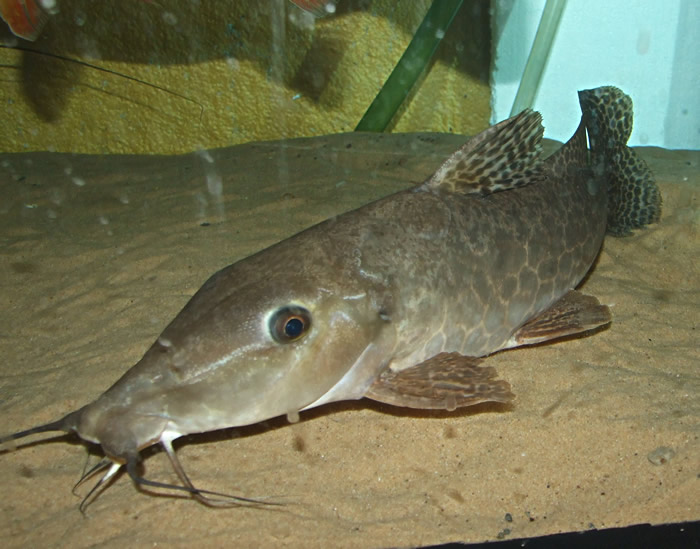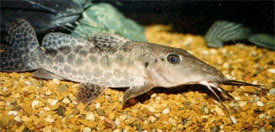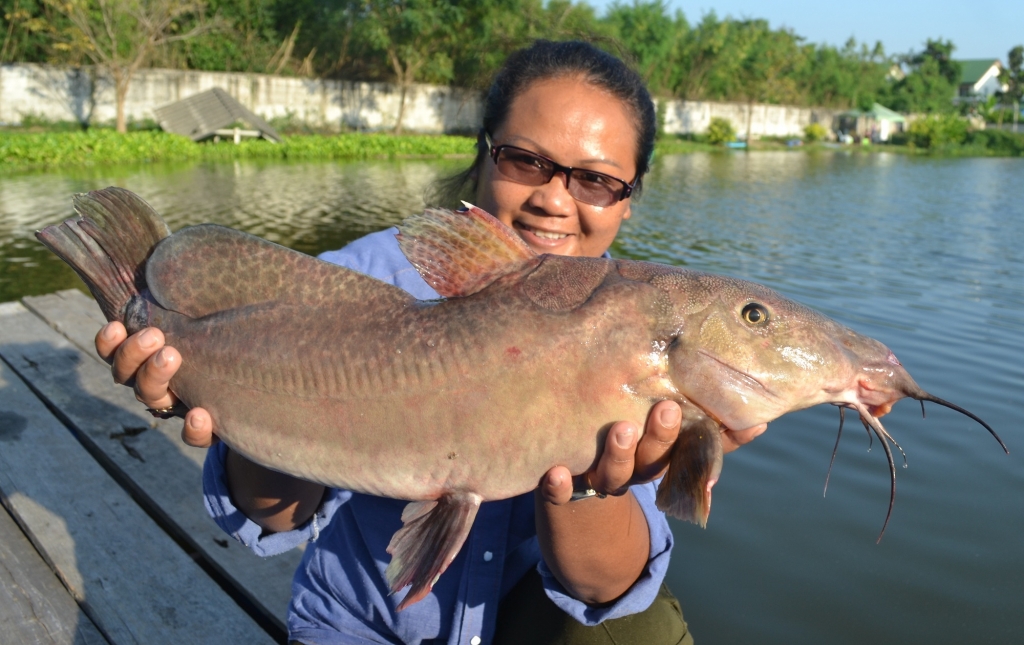Giraffe catfish
Eye-spot catfish ( Auchenoglanis occidentalis)
The eye-spot catfish ( Auchenoglanis occidentalis ) is a catfish from the family of Claroteidae which is widespread in tropical Africa in lakes and large rivers.
Dissemination
The distribution area extends into West Africa from the Egyptian Nile (south of Luxor and Aswan ) on the White and Blue Nile in Sudan, the Tekeze Setit, Baro, Omo and Wabishebelle in Ethiopia to Lake Turkana and Juba. In West Africa, he is including in Senegal, Gambia, Casamance, Corubal, Geba, Sassandra, Bandama, Comoé, in the basin of the Volta, Niger and Ogun, in the basin of Lake Chad and in the Cross River before. In the far west of its range it lives sympatric with biscutatus Auchenoglanis. In general, missing Auchenoglanis occidentalis flow through the heavily forested areas in the aquatic environment. Nevertheless, there are also deposits in the basin of the Congo. The easternmost deposits are located in some large lakes in East Africa, in the Lake Albert and Lake Edward, and Lake Tanganyika and its tributaries Rusizi and Malagarasi.
Features
The eye-spot catfish up to 70 cm long. The catfish has a moderately stocky body that is entirely scaleless. The snout is pointed and of three pairs Bartel surrounded by which the lowest is the longest and extends to the edge of the gill cover. Dorsal fin and pectoral fins have sharp spines that can be locked. The adipose fin is large. The color of the eye-spot catfish is variable according to the large distribution area and it is either evenly with close-set dark spots or large, irregular, or honeycomb -brown to olive-brown spots covered, divided by bright, grid-like lines at a beige color. Even uniformly dark brown to light purple -brown specimens occur. The underside is whitish- yellow.
- Fins formula: Dorsal I/7-8, Anal III-IV/7-8, 1/8-9 pectoral, ventral 1/5.
Way of life
Auchenoglanis occidentalis lives in large lakes and rivers, especially in shallow areas with mud floors. It is omnivorous and feeds mainly on plankton, molluscs, seeds and detritus. The eggs are laid in a nest and guarded by the male, after hatching, the young fish. In Tanganyika the gill sac catfish Dinotopterus cunningtoni lays its eggs in the nests of the eye-spot catfish which are then guarded and protected by it.










